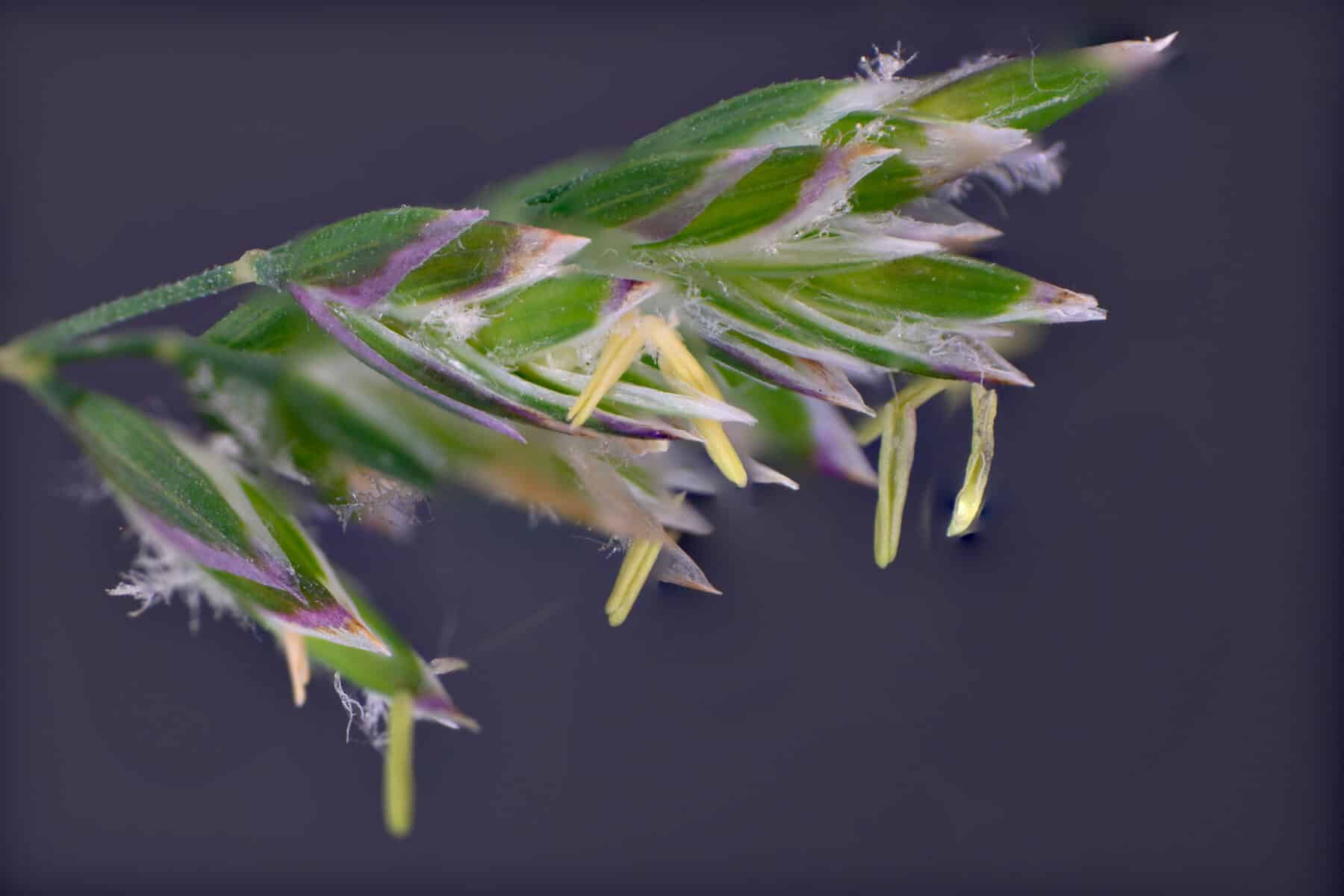Bentgrass
There are actually over 100 species of Bentgrass, but only four of these are used for turf grass in America. Read below to learn more about Bentgrass to help determine if it’s a good fit for your needs and environment.

Some Facts About Bentgrass
- Bentgrass cannot Withstand Southern u.s. temperatures except for use as putting greens.
- However, in New England and throughout the Pacific Northwest, Bentgrass can be used for lawns, athletic fields, as well as golf courses. The climate conditions in this region are perfectly suited for Bentgrass.
- Bentgrass can handle southern temperatures on golf greens because the environment is closely monitored and managed.
- The Creeping variety of Bentgrass thrives in cooler environments, which is why you’ll most often find it in northeastern United States.
Characteristices & Traits
Creeping bentgrass is a cool season grass that is also a perennial. As it grows, it forms a dense mat. The grass continues to spread through its creeping stolons. Although it has a shallow root system, it is actually quite aggressive.
Bentgrass is recognizable by its slender stolons and narrow and long leaves. These leaf blades are distinguishable because they are smooth on the top and more rigid underneath.
Bentgrass is characterized as a cool season grass. Another thing that sets the Creeping Bentgrass apart is the single flowering spikelet that can appear to be a purple to bronze-ish color. Bentgrass is also known for its color, which is a sort of bluish green hue. You cannot detect the seeds of this creeping grass with the naked eye. They are less than 1/16” long.
Another reason bentgrass doesn’t do well in the South is its carbohydrate reserves get depleted in the summer.The result is that the turf is then at a much higher risk of issues such as:
- Insects
- Drought
- Shade Coverage
- Disease
- Traffic Wear
Even in locations where bentgrass is used in the South for golf greens, it is in smaller acreage plots. This makes it easier to keep it under a watchful eye and care for it with intense management. Still, this grass does better in locations in the South that do get some cooler weather. Yet even with all of this in mind, you would need to care for Bentgrass by:
- Taking special steps during the preparation of the soil.
- Monitoring for proper air circulation.
- Taking shade coverage into consideration.
- Paying close attention to water management.
- Planning for factors like exposure and other details that impact this grass.
Where Did It Come From & What Are The Varieties?
Bentgrass is native to Europe and parts of Asia. In these regions, you can find Bentgrass used for sports fields, pastures, and lawns. It was as far back as the Colonial Period that this grass was introduced to the U.S. from Europe.
There are four main varieties of bentgrass that are used for turf:
Creeping Bentgrass
The name comes from this grass’s trait of having aggressive creeping stolons. It develops leaves that are rolled entirely within the sheath. Leaf color may vary from a variety of pale to vivid greens to dark blue and even purplish. The Creeping Bentgrass does not pair well with compacted soil conditions. So in areas where this is used with heavy traffic, such as putting greens, special adaptations must be made. Usually combining fine sand helps prevent compact conditions and helps with drainage. It also does best with full sun, but can tolerate partial shade.
Colonial Bentgrass
Less aggressive than Creeping Bentgrass, Colonial Bentgrass has a flat leaf blade. The stems are tall and slender, and the spikelets are short. With proper management, this type of Bentgrass forms dense and fine-textured turf. The color ranges from a paler yellow-green to medium dark green and all the way to dark purple for winter. This type of grass also does well with a wide range of soils.
Velvet Bentgrass
This variety of Bentgrass is known for its fine texture and softer leaves that are needle-like. With the proper care, Velvet Bentgrass is considered by many to be the most attractive grass for both warm or cool season grasses. While not as aggressive as Creeping Bentgrass, its habits border on invasive. The thin leaf blades uncurl to become flat. This variety is also known for having the darkest green color of the Bentgrasses and it turns purple in the winter. It is quite tolerant of soil conditions that are not ideal, like soils that are acidic or infertile. This variety also is the most shade tolerant of the four.
Redtop
This type of Bentgrass is not very common. It has a coarse texture and is still best for cool temperatures. Redtop is generally used for more low-quality lawn projects, such as airports, parking areas, cemeteries, and along roadsides.
There are seeded varieties used in the South including:
- Penncross
- Crenshaw
- Emerald
- Penneagle
- Penn Links
- Seaside
- Cato
Other vegetatively propagated strains of this type of grass are still used just in the North, which include:
- Toronto
- Nimisilla
- Congressional
- Cohansey
There are great variances among all of these as well. For example, the Seaside Creeping Bentgrass, which happens to be the oldest seeded strain, develops patches of more individual strains that have various textures, colors, and densities. Yet Penncross is a more uniform variety that is very tolerant to foot traffic and even disease.
Advantages & Disadvantages
All types of grasses have pros and cons based on the individual situation. Bentgrass, for instance, does not do well in warmer climates like the South. So this is only a disadvantage if you live in the South.
Here’s a quick list of key advantages and disadvantages of Bentgrass’s various strains for you to apply to your situation and determine if it’s a good fit for your needs.
Advantages
- Creeping Bentgrass has a good cool weather flooding tolerance.
- Colonial Bentgrass holds up well to snow, ice, and cold season flooding.
- Velvet Bentgrass is considered the most attractive turfgrass among cool or warm season choices.
Disadvantages
- Bentgrass is mainly only suitable for cooler climates, such as those of the Northeastern U.S. For use in the South, it requires constant maintenance.
- Creeping Bentgrass is not ideal for casual use.
- Velvet Bentgrass is slow to establish itself.
- It is important to realize that this type of grass is very demanding as far as maintenance requirements are concerned.
- Even an established lawn of Bentgrass can fail because of heat or too much or too little water.
- The mowing techniques alone are more demanding than other grass choices.
Establishment & Maintenance
Overall, for any of the varieties of bentgrass, preparing the soil is of the utmost important for a successful lawn.
In the South, the soil mixtures must be well drained. For green construction, using a mixture with sand will help prolong the health and life of Bentgrass anywhere it is being used in the United States.
Mulch is often used over the seedbed along with frequent, light watering to keep the seeds moist during establishment.
You may also want to use a starter fertilizer both before seeding and then as a follow up about one month later.
If you are planting in the South, it is best to start establishment in the early fall. Since Bentgrass does not do well with heat, it should not be started prior to the summer heat.
Watering, Moving & Pest Management
In general, bentgrass is a high maintenance grass compared to other choices. Your Bentgrass will have the following needs:
- Watering/Irrigation
- Fertilization
- Mowing (sometimes double mowing)
- Cultivation
- Pests (must be strictly managed during the summer months or year-round in the Southern region)
While this grass requires frequent watering, you want to be careful not to do it so much that it drowns out oxygen from the soil. This water is also meant to help keep the grass cooler during warmer weather, again, especially in the South. The summer months alone can be the biggest challenge in the survival of Bentgrass, even after it is established.
You even have to take into consideration your mowing methods for Bentgrass. Walking mowers are better than riding mowers for use on this grass, due to the potential damage heavy machinery can cause. If you use rider mowers, the turns should be made somewhere other than the Bentgrass surface.
Of course, various Bentgrasses have varying factors that impact their care requirements. As mentioned previously, the Creeping Bentgrass and the Colonial Bentgrass are the highest maintenance.
There are also special considerations to take into account with Velvet Bentgrass, including the need to double mow it when preparing for a tournament. This type of Bentgrass also requires almost daily irrigation. In general, any one of the Bentgrass types are higher maintenance than other choices out there.
Without proper care, these grasses become susceptible to problems like disease or insects. Velvet Bentgrass is more susceptible to a condition called iron chlorosis, which causes a whole different set of possible diseases than what the other three types can get.
Some of the potential pests that pose a threat to bentgrass include:
- Mole crickets
- Cut worms
- White grubs
- Sod webworms
Diseases that are the most common potential threats to this type of grass are brown patch and dollar spot. It’s important to know what you are getting yourself into before choosing any of the four Bentgrasses for your yard or turf.







